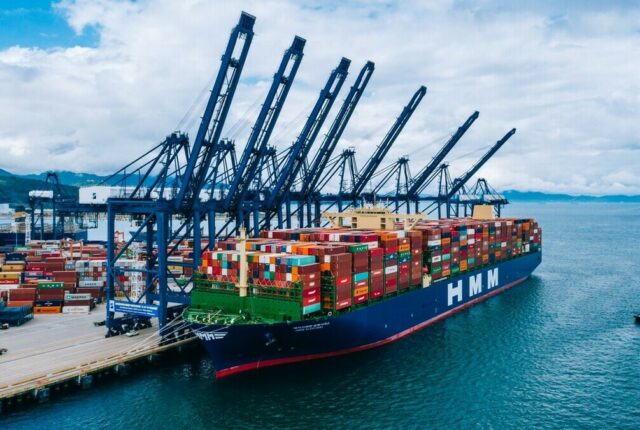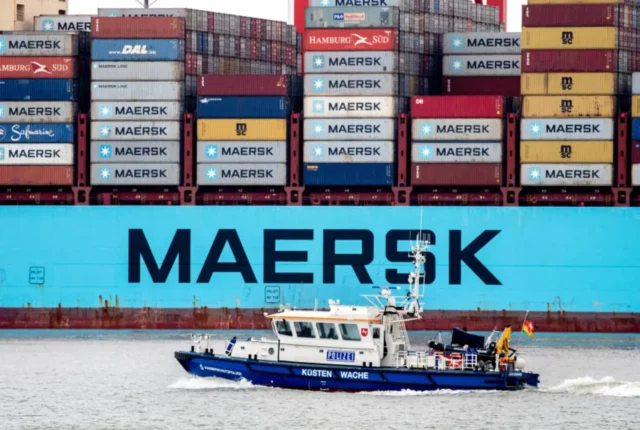
Supply Chain Optimization in the Digital Era: Harnessing Data and Analytics
In the digital era, businesses are inundated with vast amounts of data generated from various sources within their supply chains. Supply chain optimization refers to the process of maximizing efficiency and minimizing costs while delivering superior customer service. By harnessing data and analytics, organizations can gain valuable insights to optimize their supply chain operations and make informed decisions. This article explores the importance of supply chain optimization in the digital age and how harnessing data and analytics can revolutionize the way businesses operate.
The Significance of Supply Chain Optimization
1 Streamlining Operations
Efficient supply chain management involves streamlining operations at every stage, from procurement to production, warehousing, and distribution. By optimizing these processes, businesses can reduce bottlenecks, eliminate waste, and improve overall productivity.
2 Reducing Costs
Supply chain optimization enables businesses to identify cost-saving opportunities by eliminating redundancies, optimizing inventory levels, and streamlining transportation and logistics. By minimizing costs, organizations can enhance their competitiveness and allocate resources more effectively.
3 Enhancing Customer Satisfaction
A well-optimized supply chain ensures timely and accurate order fulfillment, reducing lead times and enhancing customer satisfaction. By leveraging data and analytics, businesses can improve demand forecasting accuracy, avoid stockouts, and meet customer expectations more effectively.
4 Improving Agility and Responsiveness
In today’s dynamic market environment, businesses need to be agile and responsive to changing customer demands and market trends. Supply chain optimization allows organizations to adapt quickly, make informed decisions, and efficiently handle disruptions, ensuring continuity and customer loyalty.
Leveraging Data for Supply Chain Optimization
1 Data Collection and Integration
To optimize the supply chain, organizations must collect and integrate data from various sources, such as suppliers, customers, production systems, and logistics providers. Advanced technologies like Internet of Things (IoT) devices and sensors enable real-time data capture, enhancing visibility and enabling data-driven decision-making.
2 Predictive Analytics
Predictive analytics uses historical and real-time data to forecast future outcomes and trends. By analyzing data patterns, organizations can identify potential risks, optimize inventory levels, and enhance demand forecasting accuracy. Predictive analytics also helps in proactive maintenance, reducing downtime and improving operational efficiency.
3 Demand Forecasting
Accurate demand forecasting is crucial for optimizing inventory levels, production planning, and transportation. By leveraging historical data and market insights, businesses can anticipate demand fluctuations, align production capacity, and reduce excess inventory costs while ensuring customer satisfaction.
4 Inventory Optimization
Optimizing inventory levels is essential to strike a balance between supply and demand. By analyzing historical data, businesses can determine optimal inventory levels, reduce carrying costs, minimize stockouts, and improve order fulfillment rates, ultimately enhancing customer satisfaction.
The Role of Artificial Intelligence in Supply Chain Optimization
1 Machine Learning Algorithms
Machine learning algorithms can analyze large datasets to identify patterns and make accurate predictions. By applying machine learning to supply chain data, organizations can optimize production schedules, predict equipment failures, and improve overall operational efficiency.
2 Intelligent Routing and Logistics
Artificial intelligence enables intelligent routing and logistics optimization, considering factors such as traffic conditions, weather, and fuel consumption. By optimizing transportation routes, organizations can reduce delivery times, lower fuel costs, and minimize the environmental impact of their operations.
3 Risk Management and Mitigation
AI-powered risk management systems can analyze data from various sources to identify potential risks and vulnerabilities in the supply chain. By proactively mitigating risks, organizations can minimize disruptions, ensure business continuity, and maintain a competitive advantage.
Real-Time Visibility and Collaboration
1 Internet of Things (IoT) in Supply Chain
IoT devices and sensors provide real-time visibility into supply chain processes, enabling organizations to monitor inventory levels, track shipments, and identify bottlenecks. Real-time data enhances decision-making, facilitates proactive issue resolution, and improves overall supply chain performance.
2 Blockchain Technology for Transparency and Security
Blockchain technology provides a secure and transparent platform for supply chain transactions and information sharing. By leveraging blockchain, businesses can enhance trust, traceability, and accountability across the supply chain, reducing fraud, counterfeiting, and data breaches.
3 Supplier Relationship Management
Effective supplier relationship management is crucial for a well-optimized supply chain. By leveraging data and analytics, organizations can identify reliable suppliers, negotiate favorable terms, and foster collaborative relationships, leading to improved quality, reduced costs, and enhanced overall performance.
Overcoming Challenges in Implementing Supply Chain Optimization
1 Data Quality and Integration Issues
Poor data quality and integration can hinder the effectiveness of supply chain optimization initiatives. Organizations must ensure data accuracy, integrity, and compatibility across systems to derive meaningful insights and make informed decisions.
2 Change Management
Implementing supply chain optimization requires organizational change and process redesign. It is essential to have effective change management strategies in place to address resistance, train employees, and foster a culture that embraces continuous improvement.
3 Cybersecurity Concerns
As organizations become more data-driven, cybersecurity risks become increasingly significant. Businesses must implement robust cybersecurity measures to protect sensitive supply chain data from unauthorized access, ensuring data integrity and maintaining customer trust.
The Future of Supply Chain Optimization
1 Robotics and Automation
The integration of robotics and automation in supply chain operations is set to revolutionize the industry. Robotic process automation, autonomous vehicles, and warehouse robotics can enhance productivity, reduce labor costs, and improve overall operational efficiency.
2 Advanced Analytics and Machine Learning
The continued advancement of analytics and machine learning will enable organizations to gain deeper insights into their supply chains. Predictive and prescriptive analytics, combined with machine learning algorithms, will facilitate proactive decision-making, risk management, and continuous improvement.
3 Sustainability and Ethical Supply Chains
As sustainability and ethical considerations gain prominence, organizations will increasingly focus on creating sustainable and responsible supply chains. Leveraging data and analytics, businesses can monitor and optimize their environmental footprint, promote ethical practices, and meet the evolving expectations of consumers.
Conclusion
In the digital era, supply chain optimization has become imperative for businesses aiming to thrive in a highly competitive landscape. By harnessing the power of data and analytics, organizations can streamline operations, reduce costs, enhance customer satisfaction, and improve agility and responsiveness. Embracing advanced technologies such as artificial intelligence, IoT, and blockchain empowers businesses to achieve real-time visibility, collaboration, and risk management. While challenges exist, successful implementation of supply chain optimization can yield substantial benefits and position organizations for long-term success.
FAQs
Q1: How can supply chain optimization benefit my business? Supply chain optimization can benefit your business by streamlining operations, reducing costs, enhancing customer satisfaction, and improving agility and responsiveness. It allows you to make data-driven decisions, minimize waste, and allocate resources effectively.
Q2: What role does data play in supply chain optimization? Data is the foundation of supply chain optimization. By collecting, integrating, and analyzing data from various sources, businesses can gain insights into their operations, identify improvement opportunities, and make informed decisions.
Q3: Can artificial intelligence help in supply chain optimization? Yes, artificial intelligence (AI) plays a significant role in supply chain optimization. AI technologies, such as machine learning and predictive analytics, can analyze large datasets, identify patterns, optimize routes, forecast demand, and mitigate risks.





